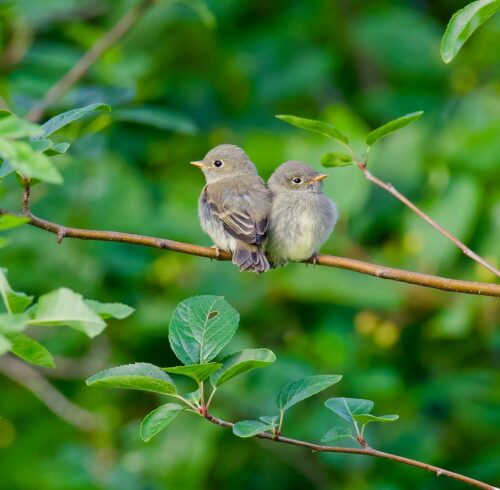Image Courtesy of Flickr.
In recent years, global temperatures have risen by an average of 0.32 degrees Fahrenheit per decade, a rate that has doubled since 1981. Faced with the ever-growing stresses of warming temperatures and habitat degradation, animals are forced to either relocate or attempt to adapt to their mutating environments. In San Diego, California, a small songbird with an olive-brown back and a pale-yellow belly has encountered its fair share of dramatically warm temperatures coupled with chaotic weather patterns. Struggling to keep pace with these harsh conditions, the now endangered southwestern willow flycatcher had no other resort but to adapt to survive.
Despite the recent surge in studies on physical and behavioral responses to climate change, research surrounding genetic adaptation remains limited as it involves tracking subtle changes in populations over decade-to-century-long timescales. However, a team of biologists led by postdoctoral researcher Sheela P. Turbek at Colorado State University was able to investigate past evolutionary patterns leveraging recent advances in historical DNA analysis.
“Over the past ten years, the technology for sequencing whole genomes from historical specimens has advanced considerably,” Turbek said. In their recently published paper in Nature Climate Change, the team tracked evolutionary changes in southwestern willow flycatchers to search for patterns and shifts in genetic diversity within populations by comparing contemporary and historical genome data collected in San Diego over a one-hundred-year period.
By comparing the genetic sequences of the San Diego willow flycatcher population to
populations in other regions of the US, the researchers discovered that the San Diego willow flycatcher population had become more genetically similar to other nearby populations in recent history. Drier climates and habitat destruction in the Pacific Northwest and Desert Southwest regions may have driven populations in those areas out of their original habitats and into San Diego. Next, interbreeding between immigrant and native populations likely introduced new genetic variants into the San Diego population, a process known as gene flow.
This increase in genetic variation tends to boost the chances of population survival because the population has a more diverse pool of individuals, some of whom may adapt better to the new and changing habitat. Turbek and her team theorize this may be the reason why the southwestern willow flycatcher was able to cope with changes to their environments.
Although climate change created drier, hotter conditions for some southwestern willow flycatcher populations, those near San Diego instead faced more intense precipitation and humidity. To evaluate how the songbird genetically adapted to these pressures, Turbek’s team extracted DNA from over 200 rare contemporary and historic samples, searching for changes in genomic regions associated with two major climate-linked variables: dew point temperature—the temperature at which water vapor starts to condense—and precipitation level. Comparing these results to nearby populations outside of San Diego, they found that the birds’ genetic codes have shifted independently of genome patterns in the Pacific Northwest and Desert Southwest, in the direction of adaptation to higher dew point temperature and precipitation over the past century. This discovery further supports the narrative that willow flycatchers in southern California have evolved to withstand the effects of climate change. “Our findings suggest that wild organisms have some capacity to cope with changing climate conditions over a century-long timescale,” Turbek said.
The team’s findings provide valuable insight into how wild populations have responded to climate change on a genetic level and the crucial role of gene flow in allowing animals to adapt to their changing habitats. As climate change continues to ravage entire ecosystems, Turbek’s team believes that maintaining genetic diversity could be the key to preserving endangered life.

